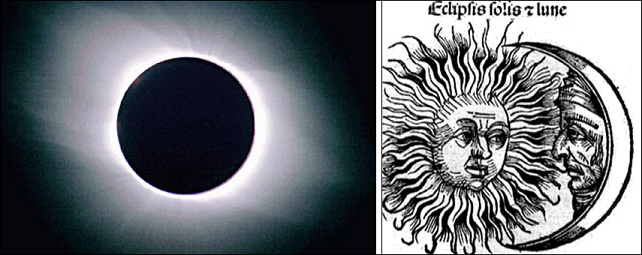Numbers by the numbers: Twone?
[ by Charles Cameron — parallels and opposites, with a pinch of Shakespeare and a digression into philosophical theology ]
.
My friend Peter Feltham steered me towards an intriguing Telegraph piece about something called the Rolling Jubilee project. The accompanying image caught my eye —
because it reminded me of another image I’d seen years ago, when I took a class in movie directing at UCLA extension.
The upper image (above) illustrates the Telegraph piece, which depicts the Rolling Jubilee thus:
The Rolling Jubilee project is seeking donations to help it buy-up distressed debts, including student loans and outstanding medical bills, and then wipe the slate clean by writing them off.
The lower image is from Jean-Luc Godard‘s film, La Chinoise, which is apparently about a bunch of French Maoist radicals in the 1960s — the “wall” in the image is made of countless copies of Chairman Mao‘s Little Red Book.
And bundles of twenty dollar bills are pretty much the intellectual opposite of stacks of Little Red Books, no?
**
So what? Where do we go from here? Is there anything actionable about those two images?
Does the lower one mean the Rolling Jubilee project is Maoist? Or that capitalism has triumphed over Marxism in the 45 years since Godard’s film was produced? In China? Or in the world at large? Or (ironically?) that capitalism, like communism, is a failed system? That there’s a Hole in the Wall?
Should we be thinking of Pyramus and Thisbe, the play within a play in Shakespeare‘s Midsummer Night’s Dream?
This man, with lime and rough-cast, doth present
Wall, that vile Wall which did these lovers sunder;
And through Wall’s chink, poor souls, they are content
To whisper.
Is there idea that there’s a chink in Wall Street?
**
I’m asking all this because we can take all manner of conclusions from a juxtaposition — it naturally lends the mind to associative thinking, extrapolation, the derivation of one or more meanings. And I surely want to emphasize the “or more” here.
But also because it brings up, with force, the issue of parallels and oppositions.
We don’t say Oxford is the opposite of a Fouquieria columnaris cactus in the Huntington Gardens — they’re too disparate to be opposite. No, we think of Cambridge as the opposite of Oxford because they’re so similar, they’re almost the same — as I’ve said elsewhere on ZP, there’s even a single word for both: Oxbridge.
Opposites are similars with difference, while parallels are differents with similarities — and is that one insight, or two?
We talk about a “two-way street” — in city traffic terms, that’s just one street, but the traffic flows in two directions — and it’s probably best to keep ’em separate.
**
Zoom in, and you’ll see differences, zoom out, and you’ll see samenesses — is that true? true when applied to concepts, debates, arguments, elections, partisanship, wars? day and night? sun and moon? war and peace? life and death?
Apples and oranges?
I don’t think we’re terribly good at thinking about this sort of thing — and I also think binary thinking is both a primary and a frequently divisive factor in the human condition, so we’d best get better at it.
Sun and moon are an interesting pair, because even though they are vastly different both in size and distance from our planet, they each subtend almost exactly the same angle on the eye — thus allowing for the brilliant halo effects of full eclipses of the sun.
Alchemists see in that sameness a marriage of opposites or coincidentia oppositorum. But here’s my pair of questions for you:
is that similarity a matter of entirely random coincidence, or is it evidence of immaculate care and design? and how different would the entire history of human belief be, if the moon and sun were not even close to the same as each other in (apparent) size?
For one thing, if the moon seemed smaller than the sun, we’d have no total solar eclipses — the impact of that alone would be interesting to consider.




